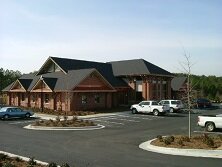PET/CT
Georgia Regents Medical Center is home to the latest in PET/CT imaging technology—the Gemini Open PET/CT—the first scanner of its kind in the Central Savannah River Area.

-
PET/CT is most commonly used in:
- Cancer treatment, to provide vital information that can diagnose cancer early and provide information on how well cancer is responding to treatment. PET/CT provides information on the degree of tumor malignancy that no other imaging modality can deliver.
- Neurology, to identify areas of the brain causing epileptic seizures and to determine whether surgery is an option. It is also useful in diagnosing complex dementia disorders like Alzheimer’s disease.
Our Team | The PET/CT Advantage | Safety | Preparing for Your Procedure
Our Team
At Georgia Regents Medical Center, all of our Nuclear Medicine Technologists are certified with the Nuclear Medicine Technology Certification Board and may also have additional certifications in cardiac nuclear medicine and PET/CT.
This means that our PET/CT specialists are experts in this field, with the highest level of skill in the safe and effective performance of these scans.
Also, many hospitals may have general radiologists reading PET/CT scans. But at Georgia Regents Medical Center, all of our scans are read by physicians who are specialty trained and board certified by the American Board of Nuclear Medicine, which means our physicians meet or exceed national standards for education, knowledge, experience and skills in interpreting these scans. Our physicians also regularly lecture at national conferences including the Society of Nuclear Medicine and Molecular Imaging.
We are also certified by the American College of Radiology Imaging Network. ^
The PET/CT Advantage
PET/CT is more than just equipment. The two-in-one scanner has many advantages to other imaging technologies. As a result, many other local hospitals send their patients here when they need this scan. PET/CT offers:
- Better detection, treatment and management of cancer. Our PET/CT physicians serve as consultants to the Georgia Regents University Cancer Center tumor boards. We review a patient’s history together with the results of their nuclear imaging studies to provide recommendations for optimal therapy and care management. As a result, surgeons, oncologists and other physicians can more accurately detect cancers, evaluate recurrence and determine the patient’s potential response to therapy, including more effective tracking of the results of chemotherapy and radiation therapy.
- A clearer picture of the disease. The fused images provide far more detail in a single visit than conventional PET or CT scanners alone.
- Improved accuracy. In the past, it was more difficult to interpret the results of both tests since patient positions change from test to test, but performing both scans at one time without having to move the patient leaves less for room for error.
- Increased patient satisfaction. The patient receives both scans at the same time, increasing patient convenience.
- Better patient comfort. The Gemini Open PET/CT’s wide-open design enables the physician to interact with the patient and is more comfortable for patients.
- Safe, quick and non-invasive. The test lasts an average of 30 minutes and is completely painless for the patient.
We are also one of the only hospitals in the Southeast to have a mobile, handheld PET probe available to assist surgeons during tumor resections. The intraoperative gamma probe identifies any remaining cancerous tissue so that surgeons can make sure the entire tumor is removed, particularly in complex cases where patients have scarring. ^
Safety
PET/CT scans use only a very small amount of radioactive glucose, about the same or less than what you would receive in a computed tomography (CT) or fluoroscopy scan. The glucose is designed to travel directly to the site of active disease.
After the exam, the radioactive material safely degrades within a day or two and is free of any side effects. ^
Preparing for Your Procedure
Before your exam:
If you are pregnant, think you might be pregnant or are breastfeeding, tell your physician.
You should have nothing to eat or drink after midnight except water. Certain patients may also need to be placed on a low-glucose/high-protein diet.
If you have diabetes, your physician will want to ensure that your glucose is carefully controlled.
We also recommend that patients refrain from heavy exercise for at least 24 hours before the exam. Exercise causes your muscles to be active and may affect how the glucose travels in your body.
During your exam:
- You will be asked to remove any clothing, jewelry or other objects that may interfere with the scan. If asked to remove clothing, you will be given a gown to wear.
- An intravenous (IV) line will be started in the hand or arm for injection of the radioactive glucose.
- The glucose will be injected into the IV. Following this, you will sit in a quiet room for about an hour to allow the glucose to concentrate in the area that will be scanned.
- You will need to empty your bladder prior to the start of the procedure.
- The actual scan will only take about 30 minutes. You will lie down on a table that slides into the scanner, and the scanner will move slowly over the body part being studied.
- When the scan has been completed, the IV line will be removed.
After your exam:
If you plan to travel by airplane within a few days of your PET/CT scan, make sure to inform your physician. It’s possible the glucose could set off radiation detectors at the airport. Your doctor can provide you with a card that explains that you have recently undergone a PET/CT scan. ^





